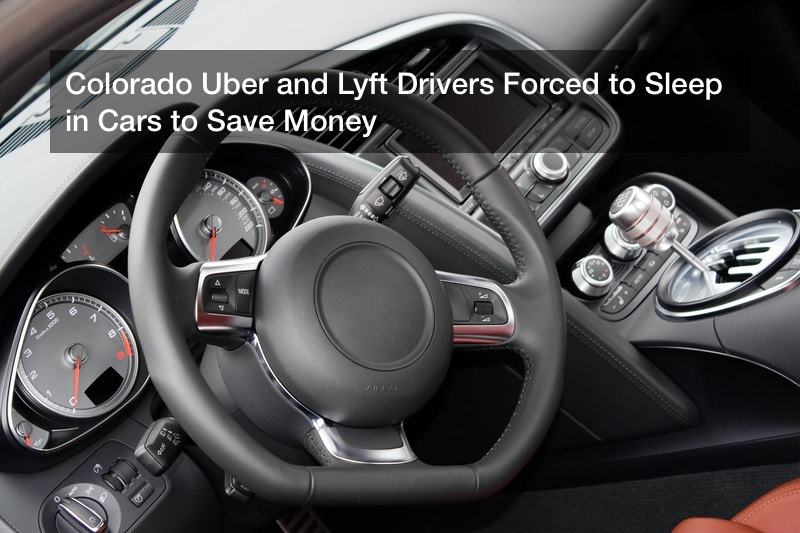Colorado Uber and Lyft Drivers Forced to Sleep in Cars to Save Money

 In many parts of the U.S., automobiles are essential for getting around. By the year 2018, experts have projected that there will be 260 million cars on the road. But in big cities where having your own vehicle is just too big an expense for most people, ride-sharing apps like Uber and Lyft provide residents with a much-needed service — reliable, affordable transportation — and an opportunity for independent drivers to make some money by working for these companies on a freelance basis.
In many parts of the U.S., automobiles are essential for getting around. By the year 2018, experts have projected that there will be 260 million cars on the road. But in big cities where having your own vehicle is just too big an expense for most people, ride-sharing apps like Uber and Lyft provide residents with a much-needed service — reliable, affordable transportation — and an opportunity for independent drivers to make some money by working for these companies on a freelance basis.
While this might seem like a win/win, countless Colorado drivers are having to make some serious sacrifices just to get by. Some of these drivers are able to head home after their shifts, but an increasing number can be found sleeping in their vehicles in the holding lot at the Denver International Airport before heading out to pick up more passengers.
Driver Jaysun Baez, who has worked for Lyft and Uber for more than three years, says he spends more nights sleeping in his car than his own bed.
“The car becomes more of your second home,” he says. “You get used to it after a while. We learn to adapt.”
It’s not like these drivers are camping out for fun; it’s a matter of survival. Although car insurance coverage lasts for 365 days, the costs of maintaining a car for a full year are enough of a financial struggle for many folks. But when you factor in the low fares of these services and the locations where drivers make the most money, it’s easy to see why so many feel they have no other option but to hunker down in their cars most nights.
As Lyft driver Crystina Page points out, “A lot of us drive into Denver to make the money, whereas if we stay in the cities that we live in, the money is just not available.”
And since it’s more cost-efficient to stay in Denver rather than waste gas driving back and forth (or, even worse, relocating to the more expensive epicenter), more drivers are doing just that.
For drivers like Crystina who choose to rent their vehicles directly from the company, rather than use one they own, they’re expected to bring in a huge number of rides on a weekly basis to get their rental fee waived. Since Crystina needed to secure 70 rides a week, she slept in the backseat four out of seven nights to save enough to buy her own vehicle. Now that she owns her own car, she still plans to sleep in it on weekends to get more passengers.
Even though passengers may love the lower fares these services provide, many drivers argue that if these companies paid them as employees, rather than as independent contractors, they wouldn’t have to resort to these money-saving methods.
It’s not an easy life, says Crystal.
“Some nights… it’s really hard. I’ve cried a lot of tears in the backseat, but I try to make sure I’m happy and smiling in the front seat for passengers. I’m doing what I need to do so my family can make it.”
Jaysun Baez echoes these sentiments, saying that while he rarely gets more than four hours of consecutive sleep, he works hard to support his 12 year old daughter. He also notes that the flexibility of his unconventional job is a selling point.
“You can do this full-time and make a good living. I don’t have dumb bosses or meetings, but there are sacrifices that come with being able to make the money to facilitate doing that.”
Although there are certain perks to working as a freelancer for these ride-sharing companies, they’ve certainly not been without their issues. Uber’s president resigned earlier this month, and both Uber and Lyft have avoided taking responsibility for the poor behavior of some of their drivers. But since the idea of being paid to drive other people around still holds a certain allure for freelancers across the country, these services are likely to stick around for the foreseeable future.




